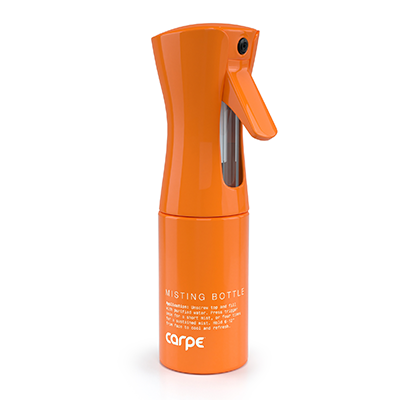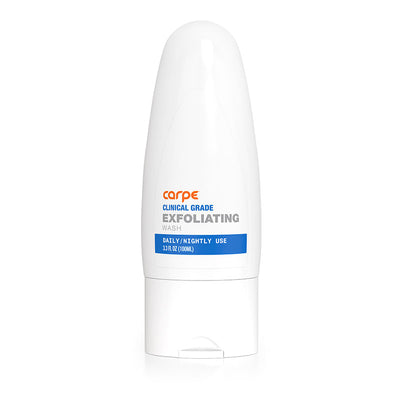The answer is “no” - Athlete’s foot does not make you sweat more, but it can make excessive sweating even more uncomfortable than it already was. Here is an in-depth look at what Athlete’s foot really is and how excessive sweating impacts it.
Athlete’s foot, known scientifically as tinea pedis, is caused by a fungal infection (called dermatophytes) that affects the skin of the feet, especially the skin between the toes. The fungus causes skin to redden and crack and the affected areas are often flaky and itchy. Sometimes affected skin can also become inflamed. The fungus is able to infect a foot when it enters the top layer of the skin through small cracks or wounds. The infection can be passed on from person to person through direct contact or when someone steps on infected flakes of skin from another person. In order to grow and thrive, the fungus that causes Athlete’s foot needs a dark, moist environment and feet provide the perfect breeding ground due to those conditions. Furthermore, the skin of the feet contain large amounts of Keratin which the fungus feed on. There are certain risk factors that make it more likely for someone to develop Athlete’s foot, these include:
Athlete’s foot appears to be a very common problem as anywhere between 3% and 15% of the population are thought to struggle with it at any given time. It is not physically dangerous, but it typically won’t go away on it’s own. Therefore, it is important for people with the condition to seek treatment.[1] While no studies have shown that Athlete’s foot causes people to sweat more, it has been noted that excessive sweating of the feet makes the development of Athlete’s foot much more likely. This is especially true for people who suffer from a condition called primary focal hyperhidrosis.[2] Hyperhidrosis causes people to sweat excessively from specific parts of the body like the hands, feet, armpits, face, and head. It affects about 3% of the US population making hyperhidrosis quite common, like Athlete’s foot.[3] The reason so many people with hyperhidrosis develop Athlete’s foot is because the condition causes the feet to constantly produce sweat which promotes the exact environment fungus need to thrive.[2] Luckily, there are several effective ways to prevent Athlete’s foot and manage the symptoms of hyperhidrosis.
How To Prevent Athlete’s Foot
Preventing Athlete’s foot predominantly consists of specific types of self-care to keep feet dry and certain precautions to limit exposure to infectants. Often times, treating hyperhidrosis symptoms, which are how you stop foot sweat and its odor, can greatly reduce the likelihood of developing a fungal infection like Athlete’s foot. Here are some practical solutions you can use to make your feet a less habitable environment for the fungi that cause Athlete’s foot:
If you are suffering from hyperhidrosis and practical lifestyle changes are not enough to keep your feet dry, then you may want to consider other treatments for sweaty feet. These include treatment options like using over-the-counter topical treatments like antiperspirant to more invasive procedures like botox injections.[3] Due to the fact that hyperhidrosis treatments reduce the amount of moisture your feet are exposed to they can drastically reduce the likelihood that you will develop Athlete’s foot.[2]
In addition to maintaining a dry pedal environment, it is also important for people to limit their exposure to the fungi that cause Athlete’s foot. Here are some tips to avoid contracting it:
How to Treat Athlete’s Foot
Due to the fact that Athlete’s foot is so common, even when practicing prevention procedures, people often develop the condition at some point in their lives. In most cases, Athlete’s foot can be treated with over-the-counter remedies that are available at local pharmacies. These treatments come in the form of creams, gels, or sprays that contain an active ingredient that stops fungal growth of kills off fungus completely. In rare cases, tablets can be prescribed for people who haven’t had success with over-the-counter treatment options. There are also natural remedies that people use, which include tea tree oil some herbal foot bath solutions, although there is not scientific evidence that they are effective.[1]
Once you have treated Athlete’s foot it is important that you continue to use preventative care practices so that you don’t develop it again. If you do also happen to suffer from hyperhidrosis, then getting treatment for it should keep your feet more comfortable and prevent you from developing Athlete’s foot as easily. There are many effective treatment options and it is important to make sure that you are taking proper care of the skin on your feet.
Sources
- Athlete's foot: Overview. (2015). Retrieved May 31, 2019, from https://www.ncbi.nlm.nih.gov/books/NBK279549/
- Common Complications of Hyperhidrosis. (n.d.). Retrieved May 31, 2019, from https://www.webmd.com/skin-problems-and-treatments/common-complications-of-hyperhidrosis
- Pariser, D. M. (2014). Hyperhidrosis (4th ed., Vol. 32). Philadelphia, PA: Elsevier.






16790753702383.jpg?v=1679075372)

16790746985853.jpg?v=1679074700)


16790757289763.jpg?v=1679075731)









